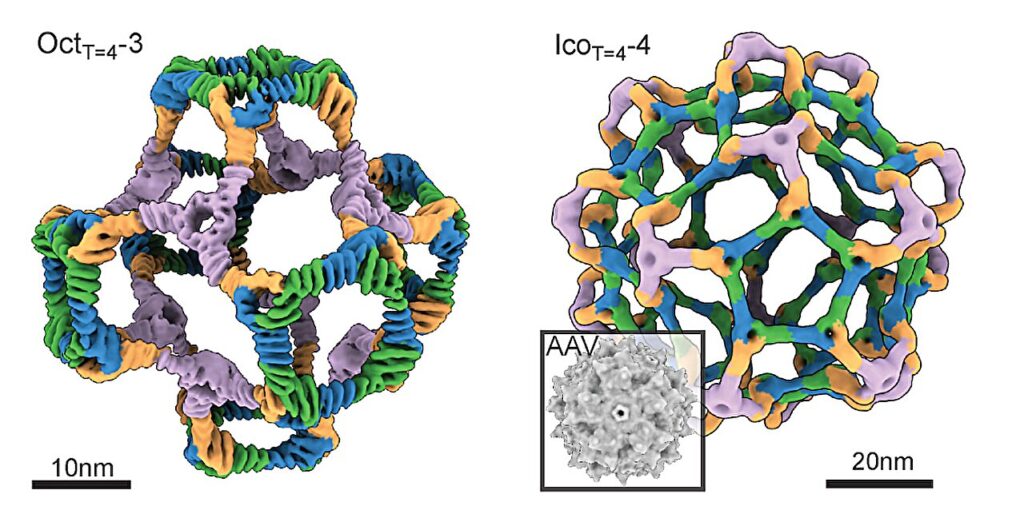Researchers have developed an innovative therapeutic platform by mimicking the intricate structures of viruses using artificial intelligence (AI). Their pioneering research was published in Nature on December 18.
Viruses are uniquely designed to encapsulate genetic material within spherical protein shells, enabling them to replicate and invade host cells, often causing disease. Inspired by these complex structures, researchers have been exploring artificial proteins modeled after viruses.
These “nanocages” mimic viral behavior, effectively delivering therapeutic genes to target cells. However, existing nanocages face significant challenges: their small size restricts the amount of genetic material they can carry, and their simple designs fall short of replicating the multifunctionality of natural viral proteins.
To address these limitations, the research team used AI-driven computational design. While most viruses display symmetrical structures, they also feature subtle asymmetries. Leveraging AI, the team recreated these nuanced characteristics and successfully designed nanocages in tetrahedral, octahedral, and icosahedral shapes for the first time.
The resulting nanostructures are composed of four types of artificial proteins, forming intricate architectures with six distinct protein-protein interfaces. Among these, the icosahedral structure, measuring up to 75 nanometers in diameter, stands out for its ability to hold three times more genetic material than conventional gene delivery vectors, such as adeno-associated viruses (AAV), marking a significant advancement in gene therapy.
Electron microscopy confirmed the AI-designed nanocages achieved precise symmetrical structures as intended. Functional experiments further demonstrated their ability to effectively deliver therapeutic payloads to target cells, paving the way for practical medical applications.
“Advancements in AI have opened the door to a new era where we can design and assemble artificial proteins to meet humanity’s needs,” said Professor Sangmin Lee. “We hope this research not only accelerates the development of gene therapies but also drives breakthroughs in next-generation vaccines and other biomedical innovations.”
For this study, Professor Lee collaborated with 2024 Nobel Chemistry Laureate Professor David Baker from the University of Washington. Professor Lee previously worked as a postdoctoral researcher in Professor Baker’s laboratory for nearly three years, from February 2021 to late 2023, before joining POSTECH’s Department of Chemical Engineering in January 2024.


